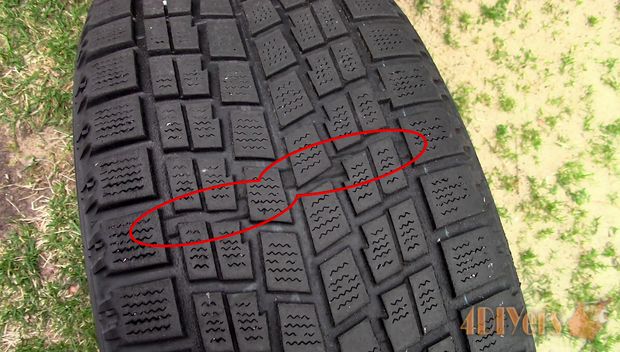There's a certain process to follow when checking tire tread depth, but it only requires a couple of inexpensive tools. There is also more than one way to measure tread depth. By doing both, you can obtain an even more accurate reading and ensure that your tires are still in tip-top shape!
Tools/Supplies:
- tire tread depth gauge
- vernier caliper
Step 1:
First inspecting the shoulder of the tire which is where the tread starts as the sidewall ends. Here we are looking for small arrow which indicates where the wear bars are located within the tire treads. Some may have text.
Wear bars are a raised portion within the tread groves which indicates how much life is left in the tires. When the depth reaches a certain measurement, than the tires are becoming unsafe.
Step 2:
Here I have a tire tread depth gauge which are only a few dollars to purchase and very easy to use.
First extend the plunger all the way out.
Push the plunger down, not on the wear bar though, this measurement uses the total tread depth instead. The plunger will stop, be sure the outer stopper portion on the case is touching the tread face, remove and then take the reading.
First I will be working with an almost brand new tire.
The first measurement is 9/32 or 7mm. We are looking for which measurement line meets the casing of the depth gage.
As a second example, I will be using my winter tires.
So for this tire the first measurement is about 7/32 or 6mm
5/32 or 4mm is the next measurement.
And finally the third is the same and the middle measurement, 5/32 or 4mm. So these measurements would show that the vehicle has a negative camber which could be from an alignment issue, a lowered vehicle.
Step 3:
As an alternative method, you can use a caliper. The caliper is equipped with a depth gauge, same type of idea as a tire depth gauge. This method is certainly much more accurate.
Extend the depth gauge out to an appropriate length, then insert in the groove.
Remove and record the measurement. Here we have 0.275”.
Next is 0.279”.
And the last is 0.285”.
Step 4:
Next I have a worn tire example and as you can see the wear bars are even with the thread face.
Tires should be rotated every 12,000 km or 8,000 miles, but this may vary between manufacturers and drive systems.
As a tolerance value between tire tread wear measurements, this can vary between manufactures and drive systems as well.
https://www.youtube.com/watch?v=Vh45TJ0oM_Q
Have you used this method to measure your tire tread depth?
Article Source: Instructables








